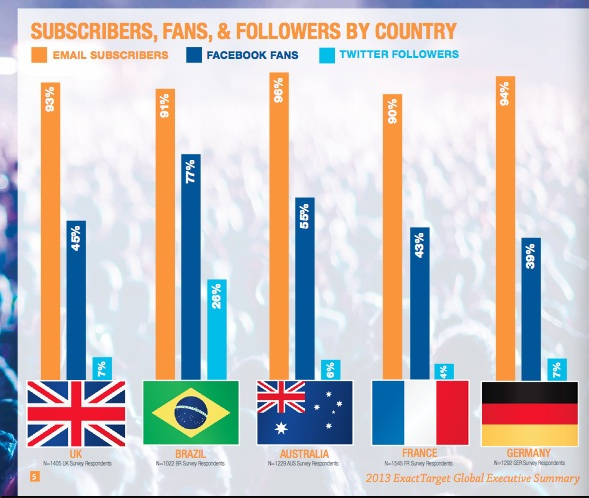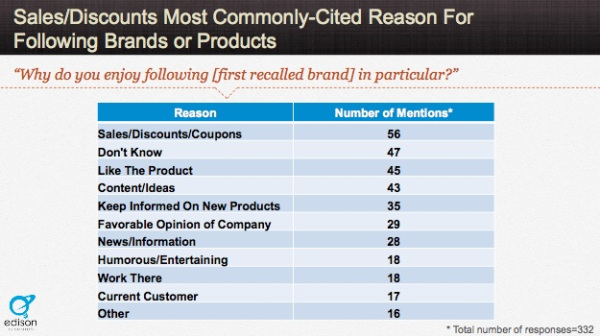 As content marketers, we rely on research and data to help shape our current and upcoming programs: It’s what helps us benchmark, and set a budget. That’s why most marketers I know are data nerds (it’s ok to admit it; we’re all in the same boat, here). We salivate over the new Facebook Insights rollout, and crack open the latest Budgets, Benchmarks and Trends reports with more gusto than the latest Dan Brown novel.
As content marketers, we rely on research and data to help shape our current and upcoming programs: It’s what helps us benchmark, and set a budget. That’s why most marketers I know are data nerds (it’s ok to admit it; we’re all in the same boat, here). We salivate over the new Facebook Insights rollout, and crack open the latest Budgets, Benchmarks and Trends reports with more gusto than the latest Dan Brown novel.
Content marketers are also very good at sharing. We send charts or research reports to our colleagues with the simple subject line, “Read this” or “compelling content here.” We sit on panels together, happily sharing stories of our own successes and challenges. But are we equally good at listening?
This was the top question that came to my mind when reviewing CMI’s recent post, 34 Essential Research Reports for More Effective Content Marketing. Fortunately, I was able to spend a good amount of time working through this list, and was most interested in reading the research compiled on consumers. As a person who is quite passionate about community, I’m always eager to have an ear on the ground, really listening to what the voices of the community were saying. However, I often find myself wrapped up in what other marketersare doing, forgetting the incredible value I can gain by listening to the consumers themselves.
Rather than just pointing you toward some research studies you should be reading, I wanted to summarize a few key learnings I gathered from exploring the consumer’s perspective on compelling content creation and delivery.
One note: To remain as current as possible, I’ve chosen to focus only on 2012/ 2013 reports, and have excluded studies that have previously been covered on the CMI blog, including Google’s Multiscreen World report, Altimeter’s Converged Media Imperative, and Base One’s Buyersphere Report.
1. The channels most frequently used to consume content
All of them! In every research report I reviewed, the consumers spoke loud and clear: “We’re everywhere — so your content should be, too.” Other key findings include:
- Marketers need to find out where their consumers are spending the most time (i.e., B2B buyers may spend more time on LinkedIn than their B2C consumers).
- Your messages should be clear and consistent across all channels.
- Compelling content should be easy to view and shareable across all channels (and devices).
- The style and tone of your content should reflect the channel it’s being published through (don’t “batch and blast”).
Let’s take a deeper dive into some of the findings about consumers’ preferred channels:
Mobile: In Google/Nielsen’s Mobile Search Moments report, we learn that consumers are using mobile search more frequently, not only to seek information, but to guide their decisions or purchases, as well. In fact, 73 percent of mobile searches were found to lead to additional actions and conversions.
In addition, this report found that mobile search isn’t just used while “on the go,” but at home, as well; driven by speed and convenience (most likely as part of simultaneous content consumption from multiple devices).
The assumption many marketers make is that mobile is more of a passive channel. This research shows it’s quickly becoming quite the opposite, which means it may be time to really ensure your content is mobile-friendly, and even start experimenting with those mobile ads you’ve been considering.
From IDG’s Connecting the Dots report, we learn that B2B buyer’s behavior on mobile is not all that dissimilar from their B2C peers. The report shares that IT decision makers will (and want to) use mobile to consume content, but many “face impediments when viewing and accessing information on a mobile device.”
Email still prevails: ExactTarget’s Channel Survey affirms that all our time and efforts spent on email marketing are, indeed, worth it. While many of us may spend a large amount of time exploring other (sometimes less expensive) avenues for our promotional content, at the end of the day, email is still the preferred channel for most of our consumers:
Globally, email remains a prevalent channel, as well. ExactTarget’s2013 Executive Summary reports that email is a top channel across the U.K., Australia, and other countries:
Social media: When it comes to social, Facebook seems to prevail over other networks. In Edison and Arbitron’s Social Habit report, consumers share that Facebook is the social networking site that has most influenced a buying decision:
And while many skeptics claim that consumers don’t wish to receive any marketing communications via social channels at all, what Social Habit uncovered is that consumers actually are engaging with brands — with brand-following behavior doubling over the last two years.
What’s causing this increase in following? The desire for more sales/discounts and coupons, yes, although content marketers know there’s so much more potential in this seemingly shallow social relationship. What Edison uncovers is that while sales/discounts are still prevailing as a top reason for consumers to follow a brand, almost half (43 percent) still listed “content/ideas” as a reason they are engaging with a brand. I strongly believe that as more brands pick up on the potential to really engage with fans via social (versus just “selling”), this number will only increase over time.
2. Consumers will engage with your content if…
… they really think it’s credible! Throughout these reports, the message from consumers is extremely loud and clear:
- They do not want to be interrupted.
- They want to consumer content where they want, how they want.
- They want a variety and abundance of content.
- They want content that’s unique, credible, and trustworthy.
Content Science’s Content + Credibility report (as shared in “How to Make Branded Content more Credible”), addresses a question that keeps me awake at night: Can branded content even be viewed as credible? (i.e., is this all a waste of time?) Colleen Jones sums up the findings of this consumer report (involving both U.K. and U.S. participants) as follows:
- Yes, consumers want to hear from your company (whew!).
- It’s all in the execution of the content (be transparent, clear, and polished).
- Brands shouldn’t position their perspective as the “end all, be all,” because that just isn’t the case. In truth, providing links to other resources will make your company appear more trustworthy.
Other traits that consumers find most effective in content are:
- It must be easy to share: IDG’s Connecting the Dots report reveals that “Emails, technology content sites, online links, and white papers are the most commonly shared assets” — with most people sharing among a network of 100+ people.
- It should be viewable across multiple channels
- It must be unbiased: IDG’s report also reveals that companies should “create a library of assets that address the needs at each state [of a buyer’s] purchase process to diffuse any bias.”
- Data, analysis, and credible sources will always prevail with your consumers.
Other types of content preferred by consumers include articles and online communities (Yes! They live!) but, interestingly, not branded white papers (only 9 percent of consumers in the CMO Council’s Better Yield study “point to vendor white papers as highly valued”).
This means that, to your consumers, analyst reports, independent reviews, and white papers from industry organizations will most often be viewed as more credible than other content. So, seek originality in your pieces, cite these resources and, if possible, sync up with them.
What I found most interesting from IDG’s report is that IT decision makers are not as influenced by social media marketing as other consumer groups. As these audiences consume a lot of content (on average, five pieces a day), they seek content across a variety of channels, including video and social — as long as they “add value through their expertise and knowledge of the topic at hand.”
3. Content can convert if…
… it meets consumers’ needs. It’s such a simple concept, yet it too often gets forgotten as we plug away at our writing projects. And the more I read these consumer reports, the more I was reminded that great content will work — if we take the time to create it. However, this doesn’t mean your organization needs to create original content 100 percent of the time: Better Yield found that the B2B content most likely to help convert was community-related, which includes content that was sourced from professional organizations, online communities, and industry groups.
In connecting with these groups, your business can provide consumers with the content they need, which is what we’re all striving for in the end here, right?
Content + Credibility sums it up, I think, quite perfectly: “Be useful, and ask yourself, are you really helping people with tough decisions? Does your branded content avoid rehashing the obvious and thoughtfully meet your consumers needs?”
The consumers have spoken: Do you find these reports sum-up your experiences creating content for your target audience? Share your experience with our readers by adding a comment, below.
Learn more about the latest content marketing research — and how to execute on the insights they reveal — by registering now to attend Content Marketing World 2013.
Cover image via Bigstock.








